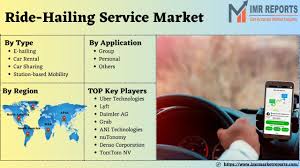FUTURE TRENDS IN CAR SHARING AND CAR HAILING SERVICES 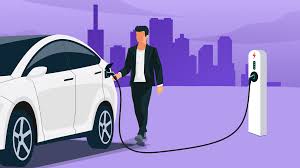
The need for effective, practical, and environmentally friendly transportation options is greater than ever as urbanization keeps growing. With flexible options to traditional automobile ownership, car sharing and car hailing services have become major players in this changing market. Examining technology developments, shifting consumer habits, legal frameworks, and their wider societal ramifications, this investigation will dive into the future trends influencing car sharing and auto hailing services.
Understanding Car Sharing and Car Hailing
Before delving into future trends, it’s essential to clarify the concepts of car sharing and car hailing:
- Car Sharing: This model allows users to rent vehicles on a short-term basis, often by the hour or day. It typically involves a fleet of vehicles parked at designated locations, which users can reserve via a mobile app.
- Car Hailing: This service connects passengers with drivers through a smartphone app. Users can request rides on-demand, and the driver picks them up at their location. Companies like Uber and Lyft dominate this space, but many local services also exist.
Technological Advancements
- Autonomous Vehicles
One of the most transformative trends is the integration of autonomous vehicles (AVs) into car sharing and hailing services. AV technology promises to enhance safety, reduce traffic congestion, and lower operational costs. As the technology matures, we can expect:
- Lower Costs: Without the need for human drivers, operational costs for car hailing services may decrease significantly, enabling companies to offer competitive pricing.
- Increased Accessibility: AVs can provide transportation options for individuals unable to drive, such as the elderly or disabled, thereby enhancing inclusivity in urban mobility.
- Fleet Optimization: Autonomous vehicles can communicate with one another, allowing for better traffic management and fleet efficiency. This could result in fewer cars on the road, as shared AVs efficiently transport multiple passengers.
- Artificial Intelligence and Data Analytics
AI and data analytics are set to revolutionize the operational side of car sharing and hailing services. Key areas of impact include:
- Dynamic Pricing: Utilizing algorithms to analyze demand patterns, companies can implement dynamic pricing strategies that adjust rates based on factors like time of day, location, and demand, optimizing revenue while ensuring service availability.
- Predictive Maintenance: AI can analyze vehicle data to predict maintenance needs before breakdowns occur, reducing downtime and ensuring fleet reliability.
- Personalized User Experience: By analyzing user preferences and behavior, companies can tailor recommendations and enhance the customer experience, making services more appealing.
Changing Consumer Behaviors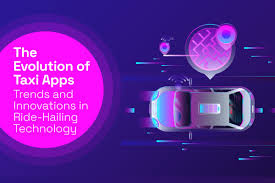
- Shift Toward Sustainability
As awareness of climate change grows, consumers are increasingly prioritizing sustainable transportation options. Car sharing and hailing services can cater to this demand through:
- Electric and Hybrid Vehicles: The incorporation of electric and hybrid vehicles into fleets can attract environmentally-conscious consumers. Many car sharing services are already making this transition, offering electric vehicles for short-term rentals.
- Carbon Offset Programs: Companies may introduce carbon offset programs, allowing users to compensate for their emissions, thereby enhancing their sustainability credentials.
- Preference for Convenience and Flexibility
Modern consumers value convenience and flexibility in their transportation options. Trends reflecting this preference include:
- Integrated Mobility Solutions: The future will likely see more platforms integrating various modes of transport, including public transit, bike sharing, and car hailing, into a single app. This holistic approach simplifies planning and makes multi-modal journeys easier.
- On-Demand Services: The expectation for immediate access will drive the demand for on-demand car hailing services. Companies will need to ensure quick response times and efficient matching of riders and drivers.
Regulatory Frameworks and Urban Planning
- Evolving Regulations
As car sharing and hailing services proliferate, governments will need to adapt regulations to address emerging challenges. Key trends include:
- Licensing and Insurance: Governments may impose stricter licensing requirements and insurance regulations for drivers and vehicles, ensuring safety and accountability within the industry.
- Zoning Laws: Cities may implement zoning laws that facilitate designated pick-up and drop-off areas, reducing congestion and improving traffic flow.
- Integration with Urban Planning
The growth of car sharing and hailing services can influence urban planning initiatives:
- Reduced Parking Demand: As car sharing and hailing services reduce the need for personal vehicle ownership, urban planners may re-evaluate parking infrastructure, repurposing space for green areas, public transit, and pedestrian pathways.
- Smart City Initiatives: The integration of these services into smart city initiatives will facilitate the use of real-time data to improve traffic management and reduce congestion.
Enhanced User Experience
- Seamless Payment Solutions
The future of car sharing and hailing will likely feature advanced payment solutions, including:
- Mobile Wallets and Contactless Payments: As digital payments become more commonplace, seamless payment options will enhance the user experience, making transactions quicker and more convenient.
- Subscription Models: Users may prefer subscription models that provide access to various vehicles or services for a flat monthly fee, appealing to those seeking flexibility without the commitment of ownership.
- Improved Vehicle Experience
The in-vehicle experience will become increasingly important as companies strive to differentiate themselves:
- Connected Vehicles: The integration of connected vehicle technology can enhance user experience by providing features like in-car navigation, entertainment options, and real-time traffic updates.
- Enhanced Comfort: Fleet operators may focus on ensuring vehicles are well-maintained and comfortable, emphasizing cleanliness and technology to meet consumer expectations.
Collaborations and Partnerships
- Strategic Alliances
The future of car sharing and hailing services will likely see increased collaborations between various stakeholders:
- Partnerships with Public Transit: Collaborations between car sharing services and public transportation agencies can create a more seamless travel experience for users, enhancing the overall mobility ecosystem.
- Tech Partnerships: Car sharing and hailing companies may partner with technology firms to leverage advancements in AI, machine learning, and vehicle connectivity.
- Integration with E-commerce
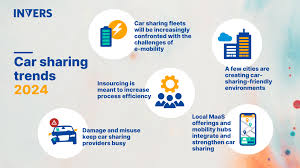
The rise of e-commerce presents opportunities for car hailing services to expand their offerings:
- Last-Mile Delivery Services: Car hailing platforms may explore partnerships with e-commerce companies to provide last-mile delivery solutions, capitalizing on existing driver networks and technology.
- Integrated Logistics Solutions: Companies might offer services that combine passenger transport with goods delivery, creating a more efficient and versatile mobility solution.
Challenges and Considerations
Despite the promising trends, several challenges need to be addressed:
- Competition
The car sharing and hailing market is becoming increasingly competitive, with numerous players vying for market share. Established companies will need to innovate continuously to stay relevant.
- Infrastructure Strain
As the number of users increases, cities may face infrastructure challenges. Urban planners will need to adapt to the growing demand for charging stations, pick-up/drop-off zones, and parking facilities.
- Privacy and Data Security
With the growing reliance on data analytics, privacy and data security concerns will remain paramount. Companies must implement robust data protection measures to safeguard user information.
Conclusion
Technology breakthroughs, changed consumer habits, and evolving regulatory environments will all play a major role in the future development of car sharing and auto hailing services. These services will be essential in offering adaptable, environmentally friendly, and effective mobility options as urbanization continues to influence transportation demands.
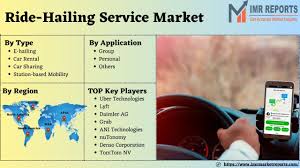
Car sharing and hailing services can improve user experiences and support the larger objectives of sustainable urban development by embracing innovation and adjusting to new trends. In order to successfully navigate the opportunities and difficulties that lie ahead, cooperation between technology businesses, legislators, and transportation firms will be crucial. The impact of these services will be seen in cities and communities all across the world, and the path toward smarter, more connected urban mobility is only getting started.
